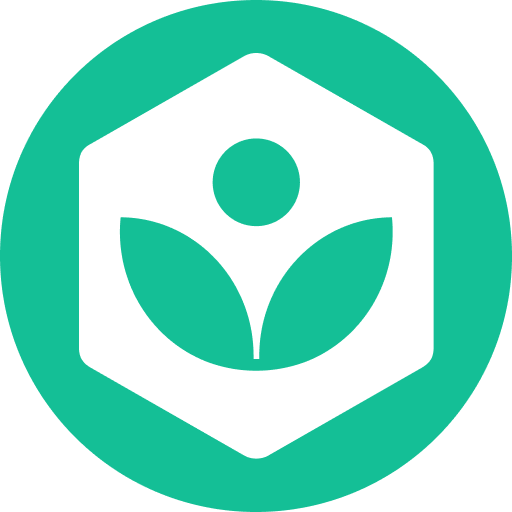Linguistics Bot-AI-Powered Linguistics Assistant
Explore Language with AI Insights
What fascinates you about the sounds in different languages?
How do you think our brain processes language? Let's explore psycholinguistics.
Can you think of a word that's particularly interesting in its structure or meaning?
Let's break down a complex sentence. What's your favorite long sentence?
How do language structures differ across languages?
What does this word mean in your language? How does it compare to English?
Are you familiar with any indigenous languages? Let's discuss their unique features.
How can understanding different languages help us communicate better?
Related Tools
Load More
NLP Computational Linguistics Expert
Expert in NLP and computational linguistics.

Linguistics Insight
Expert in linguistics, focusing on theories, syntax, and semantics.

Lingua Maven
A linguistic expert, I combine dictionary precision, usage panel insights, and style guide expertise. My skills encompass a vast lexicon, dynamic thesaurus, and in-depth knowledge of language evolution, etymology, and dialects. I am a comprehensive resour

Professor Lingua
Bilingual tutor, translating and teaching in English and Russian.
Dic++
Much more than a Dictionary. Step into the world of words, understanding their intricate meanings. Standard prompt: My native language is [Language]. The word I want to explore is ['word']. Please be comprehensive, long, and extensive.

Sentence Structure Bot - CE 101
Give me some content and I'll check your sentence structure variety and flow. ___ This GPT is brought to you by contentediting101.com
20.0 / 5 (200 votes)
Introduction to Linguistics Bot
Linguistics Bot is designed to engage users in interactive and informative discussions on various linguistic subtopics. The primary function is to provide clear and concise explanations on speech sounds, psycholinguistics, words, sentences, language structure, and meaning. For example, a user curious about the differences in sentence structure across languages could ask Linguistics Bot, and it would offer detailed insights, including examples from multiple languages. Another scenario might involve a user wanting to understand how children acquire language; Linguistics Bot would then delve into the basics of language acquisition, providing relevant studies and examples to illustrate key points.

Main Functions of Linguistics Bot
Explanation of Linguistic Concepts
Example
If a user asks about 'wh-movement' in syntax, Linguistics Bot would explain that it involves moving a wh-phrase to the beginning of a sentence for question formation, providing examples from English and other languages.
Scenario
A student preparing for a linguistics exam needs a better understanding of syntactic operations. They ask Linguistics Bot about 'wh-movement' and receive a detailed explanation with examples, helping them grasp the concept more thoroughly.
Interactive Language Practice
Example
Linguistics Bot can generate practice sentences for users to parse or translate, offering corrections and feedback.
Scenario
A language learner wants to practice their skills. They input sentences in the target language, and Linguistics Bot provides corrections and explanations for any errors, enhancing their learning experience.
Exploration of Language Diversity
Example
Users curious about indigenous languages can ask Linguistics Bot about specific languages, such as Mohawk, and receive information on its phonology, grammar, and cultural significance.
Scenario
An anthropologist preparing for fieldwork needs information on the Mohawk language. They query Linguistics Bot and receive comprehensive details about the language's structure and cultural context, aiding in their preparations.
Ideal Users of Linguistics Bot Services
Linguistics Students
Students studying linguistics can benefit from detailed explanations of complex concepts, interactive exercises, and examples from various languages, helping them to better understand their coursework and prepare for exams.
Language Enthusiasts and Learners
Individuals passionate about languages or learning new ones can use Linguistics Bot to explore linguistic diversity, practice language skills, and receive insights into the structure and usage of different languages, enhancing their knowledge and proficiency.

How to Use Linguistics Bot
Visit aichatonline.org for a free trial without login, also no need for ChatGPT Plus.
Start by visiting the official website to access Linguistics Bot without needing to log in or subscribe to ChatGPT Plus.
Familiarize with the Interface
Take a moment to explore the user interface. The layout is designed for easy navigation with clearly labeled sections for different linguistic topics.
Select a Linguistic Topic
Choose a topic of interest from categories such as speech sounds, psycholinguistics, language structure, or meaning. This helps to narrow down the information and tools you need.
Ask Specific Questions
Engage with Linguistics Bot by asking detailed and specific questions. This ensures that you get comprehensive and relevant responses tailored to your queries.
Utilize Provided Examples
Make use of the real-world examples and interactive features to better understand complex linguistic concepts. These examples can provide practical insights and enhance learning.
Try other advanced and practical GPTs
Tax AI
Maximize your tax savings with AI

Ask Directus
AI-Powered Directus Guidance

DealFinderAI
AI-powered Amazon deal discovery.

Ignite My Curiosity
Explore, Learn, and Ignite Your Curiosity with AI

🎨 Magazine Cover Bot lv3.4
AI-powered custom magazine cover maker.

Supernegotiate
AI-driven insights for smarter negotiations.
Search Master
AI-powered search for comprehensive answers.

Your girlfriend Scarlett
AI-powered girlfriend for support and advice

Tripo3D
AI-powered 3D model creation made easy

Ohayou Miku San Generator
AI-powered Japanese event illustrator.

Audio Generator
AI-powered custom audio creation tool

Abogado GPT
AI-Powered Spanish Legal Assistance

- Grammar Check
- Sentence Analysis
- Phonetics Study
- Semantics Review
- Language Comparison
Linguistics Bot Q&A
What is Linguistics Bot?
Linguistics Bot is an AI-powered tool designed to assist users in exploring and understanding various linguistic topics. It provides detailed explanations, examples, and interactive discussions on areas such as speech sounds, psycholinguistics, language structure, and meaning.
How can Linguistics Bot help with academic writing?
Linguistics Bot can help improve academic writing by providing detailed insights into sentence structure, grammar, and proper usage of linguistic terms. It can also offer guidance on how to construct complex sentences and analyze linguistic data.
Can Linguistics Bot explain complex linguistic theories?
Yes, Linguistics Bot is equipped to break down complex linguistic theories into understandable segments. It uses real-world examples and interactive discussions to make advanced concepts more accessible.
How does Linguistics Bot handle questions about multiple languages?
Linguistics Bot can compare and contrast linguistic features across different languages, including indigenous languages. It provides detailed explanations on language structures, phonetics, and semantics, helping users understand the unique aspects of various languages.
Is Linguistics Bot suitable for beginners?
Absolutely. Linguistics Bot caters to users of all levels. Beginners can start with basic questions and gradually explore more advanced topics as they become more comfortable with linguistic concepts.